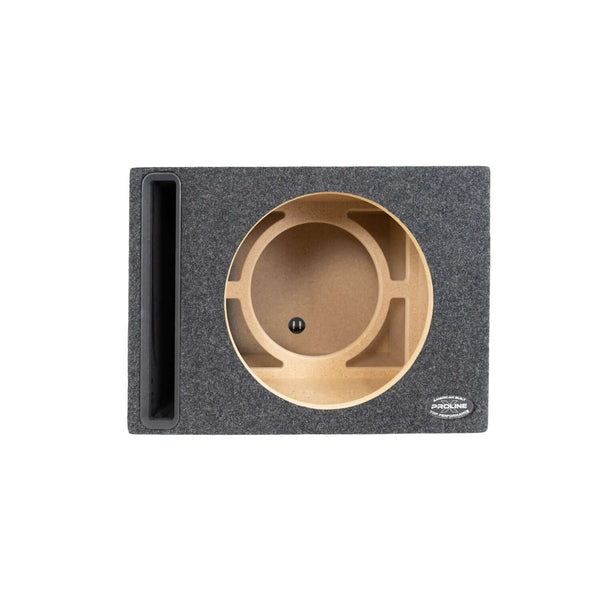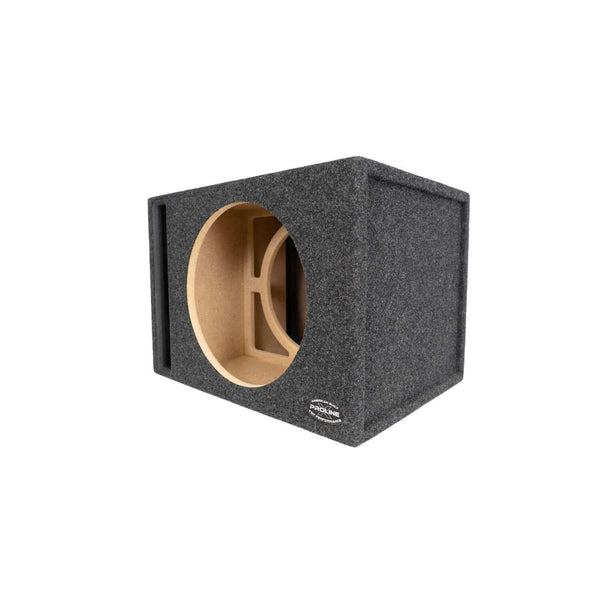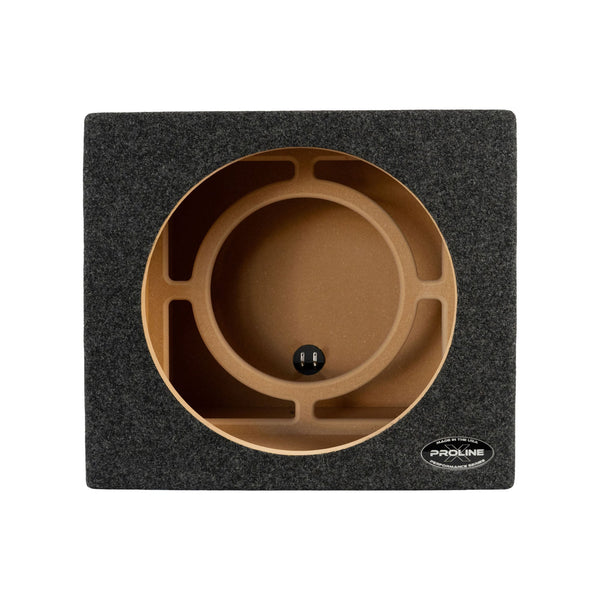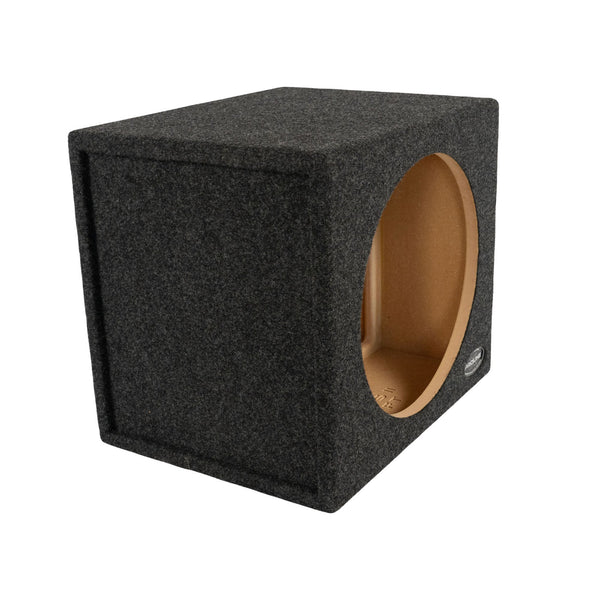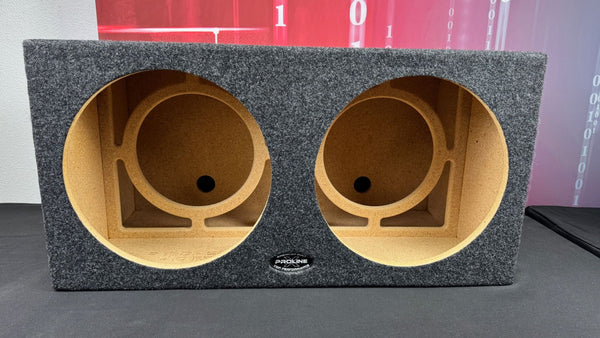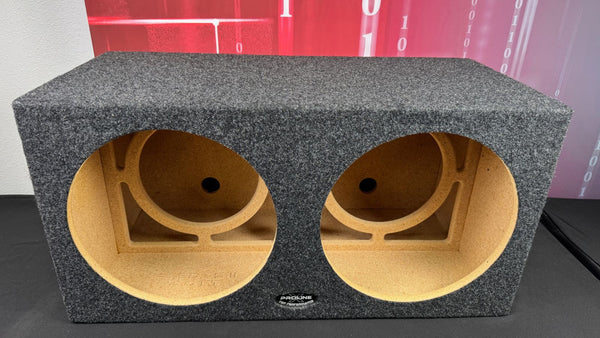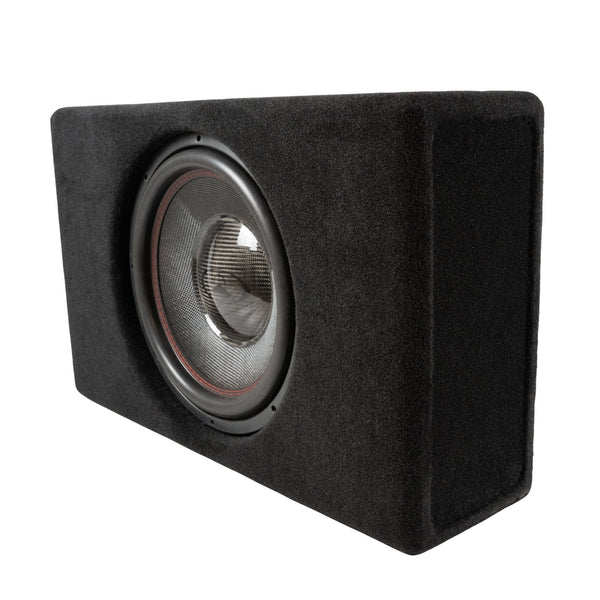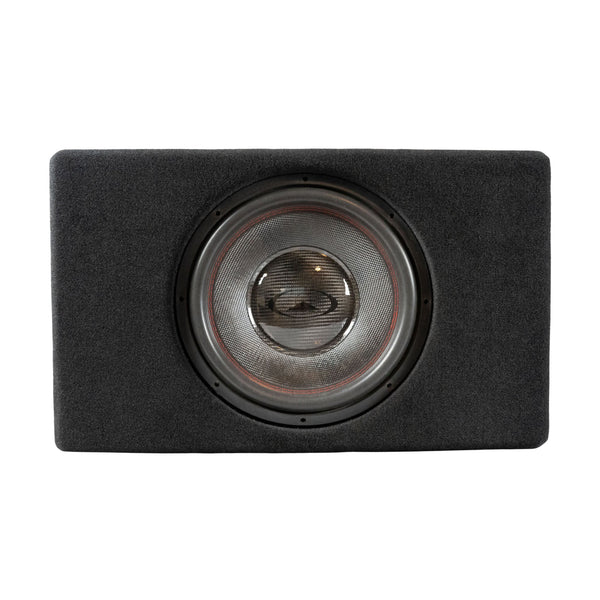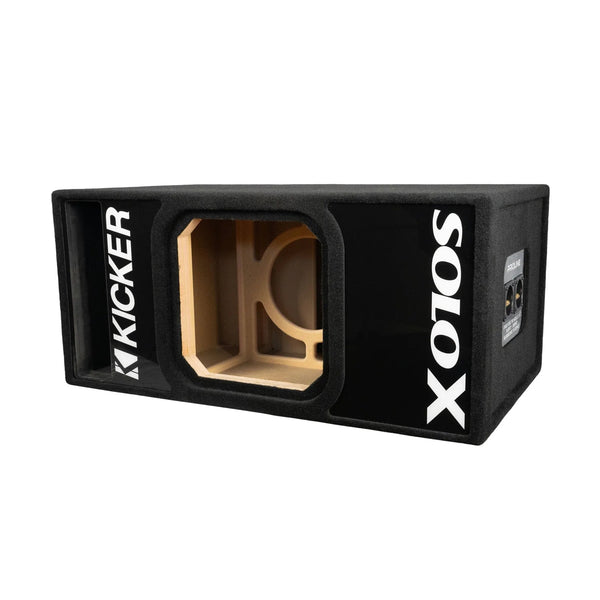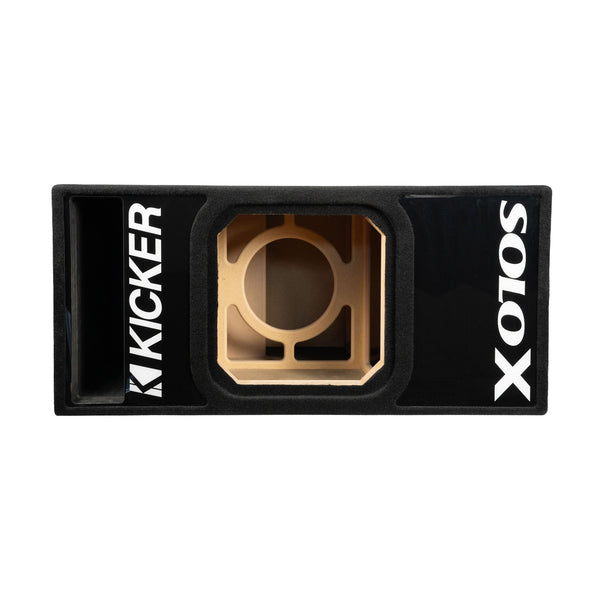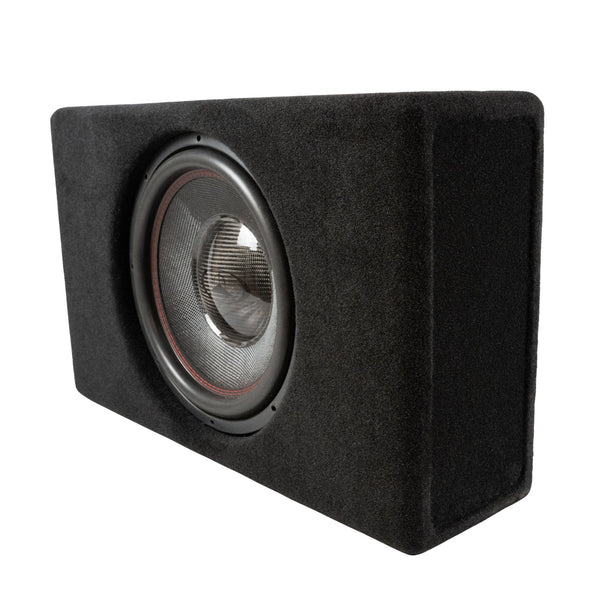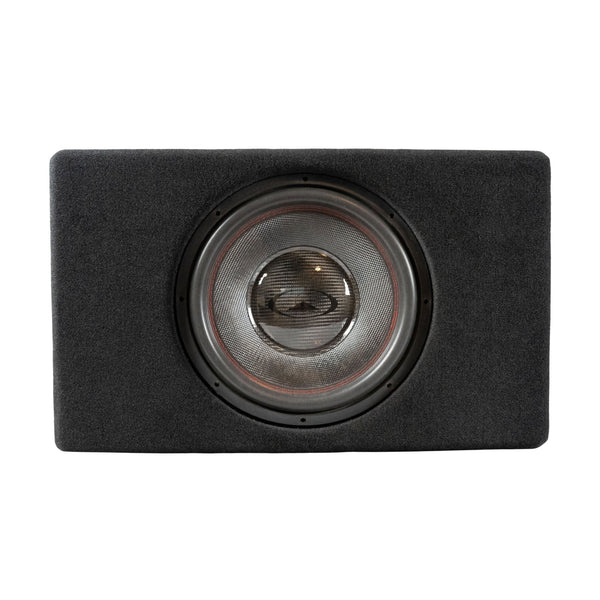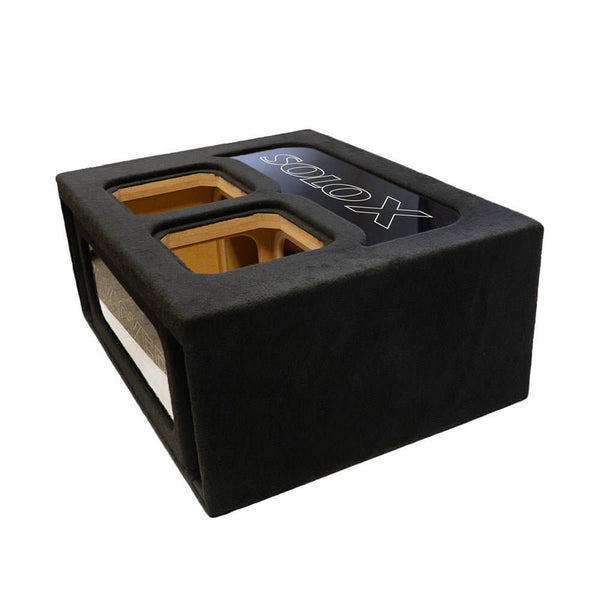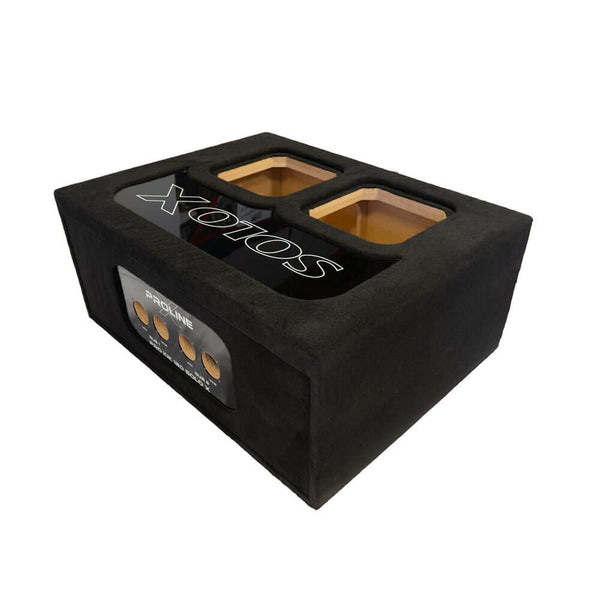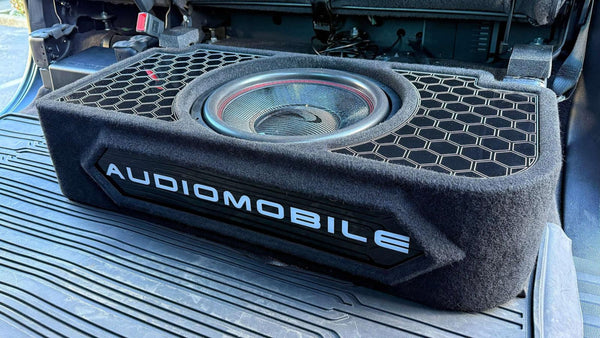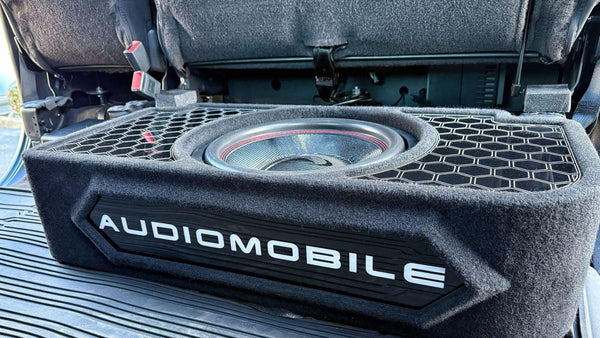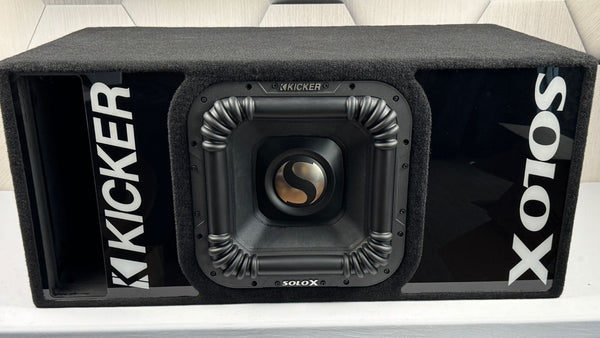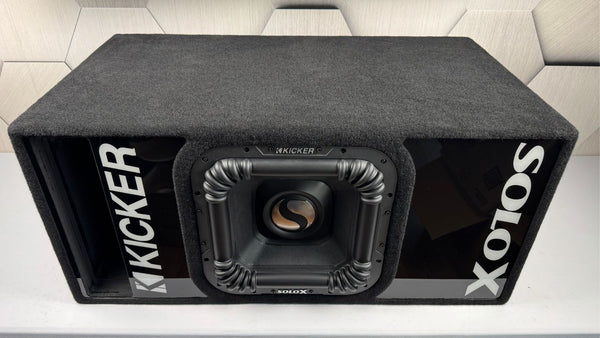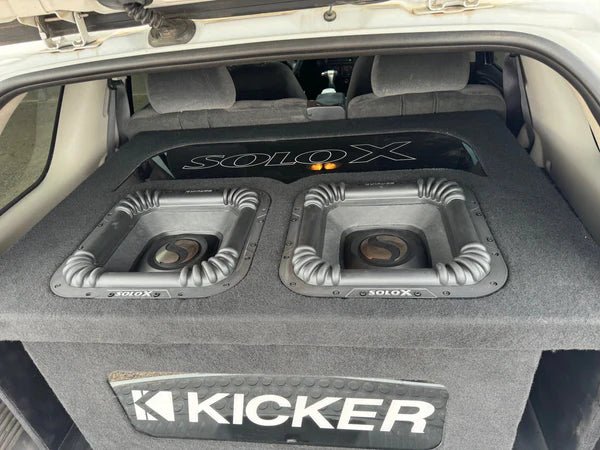15 Inch Subwoofer Boxes
Perfectly Crafted to Achieve the Best Bass for Your Car Setup.
Introduction to Deep Bass Enclosures
Deep bass enclosures, commonly known as subwoofer boxes, are specially designed to maximize the low-frequency performance of your subwoofer speaker. The right subwoofer enclosure can dramatically improve the sound quality of your audio system, whether it’s in your car or home theater. A well-thought-out box design ensures that your 15 inch subwoofer delivers the deep, resonant bass that brings your music and movies to life. Sound pressure level is also an important factor in evaluating subwoofer box performance for deep bass. Key factors like enclosure volume, port size, and overall box design play a crucial role in how your subwoofer sounds. For example, a 15 inch subwoofer requires a larger enclosure than a 10 inch model to achieve those powerful, deep bass sounds. By understanding the basics of the best enclosures for deep bass and how each component affects performance, you can create a system that’s perfectly tuned to your listening preferences.
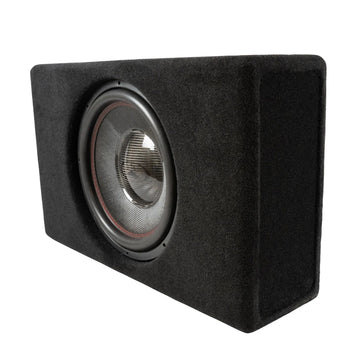
- Audio Intensity
- Collections
- 15 Inch Subwoofer Boxes
Filters
Collections
15 Inch Subwoofer Boxes
Premium 15-Inch Ported Subwoofer Enclosure
Premium 15-Inch Sealed Subwoofer Enclosure
Proline X Performance P15D-S Sealed Enclosure for Dual 15" Subwoofers
Audiomobile Encore 15 inch Sealed Down Firing Subwoofer Enclosure
Audiomobile Encore 15 inch Sealed Down Firing Subwoofer Enclosure
Professional Box for Kicker Solo X 15" - Proline X
Audiomobile Encore 15 Loaded Subwoofer Enclosure (Sealed - Down Fire)
Audiomobile Encore 15 Loaded Subwoofer Enclosure (Sealed - Down Fire)
Professional Series Enclosure for Dual Kicker Solo X 15" - Proline X
Direct Fit Single Audiomobile Encore 15 Loaded Subwoofer Enclosure | Ford F150/250
Direct Fit Single Audiomobile Encore 15 Loaded Subwoofer Enclosure | Ford F150/250
Proline X Professional Series Loaded Subwoofer Box - Kicker SoloX 15 inch
Proline X Professional Series Loaded Subwoofer Box - Dual Kicker SoloX 15 inch
- Featured
- Best selling
- Alphabetically, A-Z
- Alphabetically, Z-A
- Price, low to high
- Price, high to low
- Date, old to new
- Date, new to old
All About 15-Inch Subwoofer Boxes
A 15-inch subwoofer box, or enclosure box, is essential to any high-powered car audio system designed to deliver the thumping, deep bass that makes your music come alive. The subwoofer box is a crucial course of the audio system, directly affecting performance and efficiency. There are various box designs available to suit different needs and preferences, from sealed to ported enclosures, and in different sizes, such as 10 inch subwoofer boxes, that offer a balance between space and bass response. High-quality components—such as durable materials, proper bracing, and well-designed internal features—are vital in subwoofer box construction to ensure optimal sound quality and structural integrity.
These enclosures are built specifically to house 15-inch subwoofers, and their primary purpose is to create an acoustic environment that enhances the subwoofer’s output while ensuring deep and precise bass tones. SPL (sound pressure level) is a key metric used to measure the output and effectiveness of a subwoofer box in delivering deep bass. The choice of box also depends on the type of subs you use, as different subs (like ported, sealed, or bandpass) require specific enclosures for the best results. Some subs are designed for open environments, but with reduced efficiency compared to enclosed designs. It’s important to learn how box design and quality impact sound performance, and we recommend following expert advice or manufacturer guidelines when selecting your enclosure. Following the recommended box volume and design is essential for optimal performance and to avoid negative effects like phase misalignment or poor sound. When you buy a subwoofer box, make an informed decision by considering value, quality, and key features such as sound quality, construction, and fit. A good subwoofer box is worth the money for its durability and sound quality, making it a smart investment for your system. Some prefab boxes are easy to install, even for beginners, and ensuring your subwoofer can rest properly within the enclosure helps prevent damage. Using a box that’s too small for a 15-inch subwoofer can lead to poor performance, cracking, or even damage. A lack of a proper box can cause the subwoofer coil to pull out of stroke, resulting in damage and negative effects on your system. The role of electronics in your overall audio system—including the subwoofer box—should not be overlooked, as they all work together to deliver loud, powerful bass and a satisfying listening experience.
Sealed vs. Ported Subwoofer Boxes
When selecting the perfect 15-inch subwoofer box, one of the most important decisions you’ll face is choosing between a sealed or a ported enclosure box. For both types, it’s recommended to use box material with a thickness of at least 3/4 inches to ensure durability and prevent flexing. Always check the box’s corners for any signs of damage or weakness, as sturdy corners help maintain the enclosure’s integrity.
Sealed boxes are known for their compact design and tight bass response. These enclosures create a clean, accurate sound that is perfect for music genres that demand precision, such as jazz or classical. Make sure to use a proper cover or sealant to protect the enclosure and improve sound quality by preventing air leaks. At the end of assembly, ensure all joints are thoroughly sealed to avoid any loss of performance.
On the other hand, a ported subwoofer box, also known as a vented enclosure, has a tuning frequency that helps to amplify the bass, producing a louder and more forceful output. When building a ported box, it’s crucial to calculate the correct port length for optimal performance and sound quality. Ported boxes are ideal for genres like hip-hop or EDM, where you want that booming, chest-thumping bass.
Be aware of common errors in box selection or construction, such as incorrect dimensions, poor sealing, or using the wrong material thickness, as these can significantly affect your subwoofer’s performance.
Importance of Air Space
The internal volume, or air space, of a 15-inch subwoofer box is another critical factor in achieving optimal sound performance. Each subwoofer has specific air volume requirements, typically measured in cubic ft, that ensure the speaker cone can move freely without any unwanted resonance or pressure buildup. These requirements are often specified in cubic feet in manufacturer guidelines. Getting the right cubic ft not only helps improve the bass response but also prolongs the lifespan of your subwoofer. Too little air space can restrict movement, leading to distortion, while too much air space can reduce the control, making the bass sound muddy. Always check the manufacturer’s recommendations for air volume and match it to your box spec.
Materials and Build Quality
The materials used to build the subwoofer box also play a key role in the overall performance. Most high-quality 15-inch subwoofer boxes are constructed using advanced dado construction techniques and our signature miter techniques from MDF (Medium Density Fiberboard), including MDF panels, which provide the strength and stability needed to withstand the intense vibrations caused by the powerful bass. Some top-tier sub-boxes use birch wood, known for its strength and lightness, providing a premium option for those wanting the best performance. Fiberglass is another material sometimes used for custom subwoofer box construction due to its strength and ability to form complex shapes. The MDF or birch’s thickness and the quality of the outside panels, joints, and extra reinforcement bracing contribute to a durable seal and resonance-free enclosure. Reinforcing the corners is essential to prevent cracks, chips, or other damage during shipping or heavy use, ensuring the box remains sturdy and reliable. At the end of construction, make sure all joints are properly sealed to avoid any leaks and maximize durability. The box’s baffle should be strong enough to handle the power of brands like Kicker, Sundown, and Rockville, preventing any unnecessary flex. Avoid construction errors, such as gaps or misaligned panels, as these can compromise the box’s performance and longevity.
High-quality carpeting or coating on the exterior not only adds to the aesthetics but also provides an extra layer of protection for your enclosure box. Using a high-quality cover or enclosure material is crucial to seal and protect the box, preventing leaks and enhancing sound quality by ensuring a tight finish. Well-made prefab sub-boxes can be an excellent option for those who want convenience without sacrificing quality. Armor, glue, and precise construction ensure the box will withstand the most intense use, and a well-built box can endure hours of continuous operation without degrading in quality or performance.
For those who prefer customized setups, many prefab sub-boxes offer options for a dual 15-inch setup or custom tuning to match specific performance needs. Some options are even designed specifically for vehicles like Jeeps, Rams, or mini trucks, ensuring a perfect fit within your car audio system. Investing in a durable, well-constructed subwoofer box is a smart choice for the money, as it delivers long-lasting performance and sound quality. For serious audio enthusiasts, a quality box is worth every penny.
Building a Subwoofer Box
Constructing a subwoofer box is a rewarding project that can significantly enhance your system’s sound quality. The first step is to calculate the ideal volume for your box, based on your subwoofer’s specifications and the type of sound you want to achieve. The box design should match the power and sensitivity of your subwoofer, and you’ll need to decide between a ported box for louder, deeper bass or a sealed box for tighter, more accurate sound. Using high-quality materials like 5/8” or thicker MDF or particle board is essential for durability and performance. Adding internal bracing is important to increase the strength and rigidity of the subwoofer box, reducing unwanted vibrations and flex. Make sure all joints are sealed tightly to prevent air leaks, which can negatively impact sound quality. To further improve performance, consider adding polyfill or fiberglass insulation inside the box to reduce unwanted resonance and standing waves. While a ported box can deliver more bass, it requires careful calculations to get the port size just right. A well-built subwoofer box, designed with attention to detail, will let your subwoofer perform at its best.
Box Construction and Testing
Building a high-quality subwoofer enclosure is more than just assembling a box—it’s about precision, planning, and performance. The construction process is where your 15 inch subwoofer’s potential for deep, powerful bass truly comes to life. Every detail matters, from the type of material you choose to the way each panel is cut and joined. Using dense, sturdy materials like MDF or birch plywood, along with robust internal bracing, ensures your subwoofer box can withstand the intense air pressure and vibrations generated by large subs. This attention to build quality not only prevents unwanted resonance but also preserves the integrity of your audio, letting your subwoofers deliver clean, distortion-free bass.
When designing your subwoofer enclosure, it’s essential to match the box volume and tuning frequency to your specific subwoofers. A properly sized box allows the subwoofer cone to move the right amount of air, producing those deep, resonant lows that make your music feel immersive. The tuning frequency, determined by the enclosure’s dimensions and port design, shapes the character of your bass—lower tuning for deep, rumbling bass, or higher tuning for a punchier sound. Always consider the available space in your vehicle or room, as well as your listening preferences, when you choose or build your subwoofer box.
Once your box is built, thorough testing is key. Evaluate the enclosure by listening for clear, controlled bass and checking for any rattles or air leaks. A well-constructed subwoofer box should handle the power of your 15 inch subs without flexing or distorting, even at high volumes. Inspect the box for durability, ensuring all joints are tight and the enclosure is sealed against air loss. This testing phase is your opportunity to fine-tune the setup, making adjustments to the port or internal damping if needed to achieve the best possible audio quality.
Taking the time to carefully design, build, and test your subwoofer enclosure pays off with a richer, more dynamic listening experience. Whether you’re crafting a custom box from scratch or upgrading your current enclosures, focusing on quality materials, precise construction, and proper tuning will help your 15 inch subwoofers reach their full potential. With the right approach, you’ll enjoy deep, powerful bass that transforms your audio system and brings your favorite tracks to life.
What are the benefits of using a 15-inch subwoofer box in a car audio system?
A 15-inch subwoofer box enhances bass output, providing deep, powerful sound in your car audio system. It ensures optimal performance by effectively containing and directing the sound waves, resulting in a more immersive listening experience with rich, low-frequency tones that resonate throughout the vehicle. When installing or selecting your subwoofer box, make sure to consider what size subwoofer you need for your car as well as the location of your car's battery to ensure easy access and avoid potential installation issues.
Additional Considerations for your 15-inch subwoofer box
It’s also important to consider your enclosure’s tuning frequency. Tuning, measured in Hz, affects how your bass will sound—lower tuning gives you deeper bass, while higher tuning provides more punch. Matching your subwoofer box with the right amp is also key. A well-matched amp will provide enough power without overwhelming your subwoofer, making the combination of your 15-inch box, amp, and subwoofer work seamlessly together.
For those looking to build or select the perfect 15-inch subwoofer box, you can easily download blueprints or guides to assist with your project. Additionally, checking online review pages or resources can help you make informed decisions based on real user experiences.
Choosing the right 15-inch subwoofer box means understanding your sound preferences, the type of music you enjoy, and your car’s available space. Whether you’re using a dual setup for maximum output or a single 15 inch ported box for precision, you can experience bass that truly transforms your car audio experience with the right combination. Don’t forget that some of our high-quality subwoofer boxes come with free shipping within the USA, making upgrading your car audio setup even easier. Let your music hit harder and sound clearer with our premium 15-inch subwoofer enclosures.
Subwoofer Enclosure Placement
Where you place your subwoofer enclosure can make a big difference in how your system sounds. In car audio setups, the subwoofer box is often installed in the trunk, where it can deliver strong, even bass throughout the vehicle. Positioning the box in a corner or against a wall can help maximize efficiency and minimize unwanted resonance. In home theater systems, placing the subwoofer enclosure in a corner or along a wall can also enhance low-frequency response, but it’s important to consider the room’s dimensions and the placement of other speakers for the best results. Free air subwoofers offer another option—they can be mounted under the rear deck or behind the rear seat in a car, but may need extra support to prevent vibration and ensure stability. No matter the environment, thoughtful placement of your subwoofer box and enclosure will help you achieve the best possible sound quality from your system.
Tuning the Subwoofer Box
Tuning your subwoofer box is essential for achieving the deepest, cleanest bass possible. This process involves adjusting key parameters like port size, box volume, and sometimes even the shape of the enclosure to match your subwoofer’s specs. Tuning frequency is measured in Hz, and selecting the right Hz value is crucial for achieving the desired bass response. Using tools like a sound level meter and conducting listening tests can help you fine-tune your setup for optimal sound quality. For example, a sealed box is generally easier to tune and provides a tighter, more controlled bass, while a ported box can deliver more output but requires precise calculations to get the port and volume just right. Matching the box’s tuning to your subwoofer’s power handling and sensitivity ensures that your system sounds balanced and powerful. A well-tuned subwoofer box will let you enjoy deep, accurate bass that enhances every listening experience.
Subwoofer Box Maintenance
Keeping your subwoofer box in top condition is key to maintaining great sound quality and efficient performance. Regularly inspect the box for any signs of wear, such as cracks, loose joints, or damage to the enclosure. Address any issues promptly to prevent air leaks or rattling, which can degrade sound quality. It’s also important to keep the box clean and free from dust and debris, as buildup can affect both the subwoofer and the enclosure’s performance. Protect your subwoofer box from extreme temperatures and humidity, which can warp materials and impact sound. By following these simple maintenance steps, you’ll ensure your subwoofer box remains efficient and continues to deliver powerful, high-quality bass for years to come.
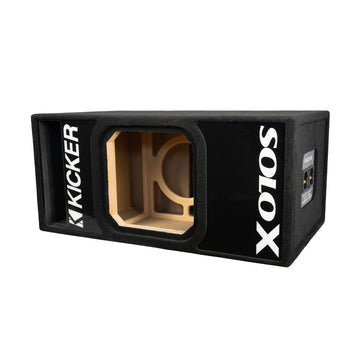
15 Inch Subwoofer Boxes
Frequently Asked Questions
What is the recommended enclosure size for a 15-inch subwoofer?
The recommended enclosure size for a 15-inch subwoofer varies based on whether it's a sealed or ported enclosure:
- Sealed Enclosure: Typically requires around 1.25 to 2.4 cubic feet of airspace.
- Ported Enclosure: Generally needs between 3 to 5 cubic feet of airspace.
Always refer to the specific manufacturer's specifications for optimal performance.
For more detailed information, visit the Audio Intensity 15-inch subwoofers collection.
What is the best 15-inch subwoofer enclosure design?
The best enclosure design for a 15-inch subwoofer depends on your audio preferences:
- Sealed Enclosure: This enclosure provides tight, accurate bass. It is ideal for genres that require precision, such as classical and jazz. It requires less space, typically 1.25 to 2.4 cubic feet.
- Ported Enclosure: This produces louder, deeper bass. It's great for bass-heavy genres like hip-hop and EDM. However, it requires more space, typically 3.0 to 3.5 cubic feet.
Each design has benefits, so choose based on your desired sound quality and available space.
Is a 15 inch sub louder than 2 12s?
A single 15-inch subwoofer can produce deep, powerful bass due to its larger surface area. Still, two 12-inch subwoofers typically offer more overall cone area, which can move more air and potentially produce louder sound. The actual loudness depends on factors like the subwoofer models, power handling, enclosure design, and amplifier power. Generally, two 12-inch subwoofers can balance loudness and quality, while a 15-inch subwoofer can deliver more impactful bass.
Does a bigger woofer mean more bass?
Generally, a bigger woofer can produce more bass because it has a larger surface area that can move more air, resulting in deeper and more impactful low frequencies. However, other factors like the woofer's design, enclosure type, power handling, and overall build quality also play significant roles in determining the bass output. Bigger woofers tend to excel in producing lower frequencies but may require more space and power to perform optimally.
Should I choose sealed or ported for a 15" sub?
Ported boxes give you more output and deeper bass. Sealed boxes are tighter and more controlled. The choice depends on your sound goals.

